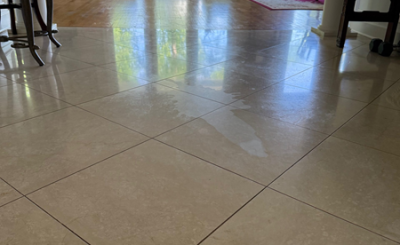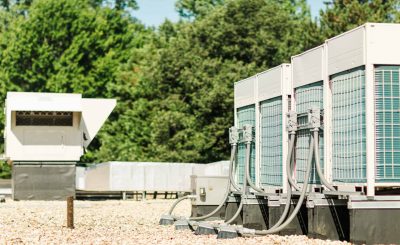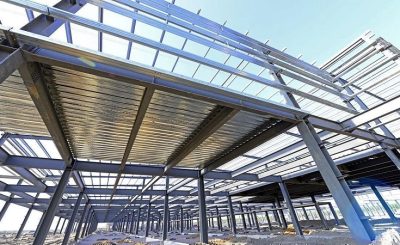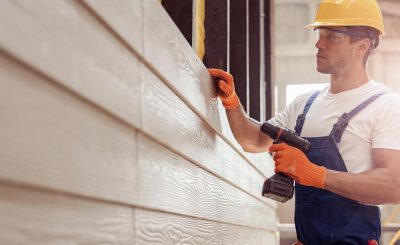What is Asbestos?
Asbestos is a naturally occurring mineral fiber found in rock and soil. Its unique properties, like resistance to heat and fire, made it popular in construction and manufacturing from the 1940s to the late 1970s. It’s often found in older homes, especially those built before 1980. Common applications included insulation, floor tiles, and roofing materials. However, despite its benefits, asbestos is highly hazardous when its fibers become airborne, leading to serious health issues.
Health Risks Associated with Asbestos
Exposure to asbestos fibers is a significant health concern. Breathing in these fibers poses serious health risks, including mesothelioma, lung cancer, and asbestosis. There is no safe level of exposure, and the risk increases with the amount of asbestos inhaled. Symptoms of asbestos-related diseases can take years to appear, making early detection difficult. Breathing in asbestos fibers poses serious health risks, including mesothelioma, lung cancer, and asbestosis.
Common Places Asbestos is Found in Homes
In homes, asbestos may be lurking in various unsuspecting places. Here are some of the most common:
- Attic and wall insulation made with vermiculite.
- Vinyl flooring tiles and the backing on vinyl sheet flooring.
- Roofing and siding shingles composed of asbestos cement.
- Textured ceilings and wall paints.
- Hot water and steam pipes coated or insulated with asbestos.
Homeowners should be vigilant, particularly if their home was built before the 1980s. If you suspect asbestos is present, it’s crucial to contact a professional for an inspection to avoid disturbing the material.
The Importance of Asbestos Inspections
Why Inspections are Necessary
Asbestos inspections are crucial for maintaining a safe living environment. This naturally occurring mineral, once popular for its durability and fire-resistant properties, is now recognized as a serious health hazard when its fibers become airborne. Conducting regular inspections, especially in older homes, helps identify the presence of asbestos before it poses a risk. This is particularly important if you plan to renovate or demolish parts of your home, as disturbing asbestos-containing materials can release harmful fibers into the air.
Potential Consequences of Ignoring Asbestos
Ignoring the potential presence of asbestos in your home can lead to significant health risks, including lung cancer, asbestosis, and mesothelioma. These diseases are often diagnosed years after exposure, making early detection through inspections vital. Additionally, failing to address asbestos issues can lead to costly legal liabilities and decrease your property value. Homebuyers are increasingly aware of asbestos dangers, so a proactive approach can prevent future complications.
Legal Implications of Asbestos in Homes
The legal landscape surrounding asbestos is complex, with strict regulations governing its management and removal. Homeowners are often required to disclose any known asbestos presence to potential buyers, as failure to do so could result in legal action. Furthermore, any renovation or demolition projects must comply with local and federal asbestos regulations. Hiring certified professionals to conduct inspections and manage asbestos is not just a safety measure but a legal necessity to avoid penalties.
How to Get a Free Asbestos Inspection for Your Home
Eligibility Criteria for Free Inspections
Getting a free asbestos inspection for your home might sound like a dream, but it’s possible under certain conditions. Federal housing organizations provide asbestos removal grants primarily aimed at assisting low-income households. So, if you’re in a low-income bracket, you might qualify for these inspections. Additionally, some local government programs offer free inspections to homeowners living in older homes, especially those built before the 1980s when asbestos was commonly used in construction materials. It’s crucial to check with your local housing authority to see if you meet the eligibility requirements.
Steps to Apply for a Free Inspection
Applying for a free asbestos inspection involves a few straightforward steps:
- Identify Your Eligibility: First, determine if you qualify based on income or the age of your home. Contact your local housing authority for guidance.
- Gather Necessary Documents: You’ll need to provide proof of income, home ownership, and possibly the age of your home.
- Submit an Application: Fill out any required forms from your local housing authority or the organization providing the inspection.
- Schedule the Inspection: Once approved, coordinate with the inspection team to set a date and time that works for you.
Organizations Offering Free Asbestos Inspections
Several organizations might help you get a free asbestos inspection. Local government housing departments often have programs in place. Non-profit organizations dedicated to housing safety can also be a resource. In some cases, environmental health agencies run initiatives to ensure community safety, especially in areas known for older housing. It’s wise to reach out to these entities and inquire about available programs. Remember, federal housing organizations provide asbestos removal grants which can cover inspection costs as part of broader assistance efforts.
Choosing a Certified Asbestos Inspector
Qualifications to Look For
Selecting a certified asbestos inspector is a critical step in ensuring the safety of your home. Certification is non-negotiable, as it assures you that the inspector has met specific training standards and is up-to-date with the latest safety protocols. Look for inspectors who are accredited by reputable organizations, such as the Environmental Protection Agency (EPA) or equivalent state bodies. Additionally, inspectors should have a solid track record in asbestos detection and management.
Questions to Ask Potential Inspectors
Before hiring an inspector, it’s important to conduct a brief interview to gauge their expertise and approach. Consider asking the following questions:
- Can you provide proof of your certification and training?
- How many asbestos inspections have you conducted in the past year?
- What is your process for handling and analyzing samples?
These questions can help you assess their competence and ensure they follow safe practices.
Verifying Inspector Credentials
Once you’ve narrowed down your options, take the time to verify the credentials of the potential inspectors. You can do this by checking with the certifying bodies to confirm their status. It’s also wise to read reviews or request references from past clients to get a sense of their reliability and professionalism. Remember, an inspector’s credentials are not just about their qualifications but also about their reputation and commitment to safety.
What to Expect During an Asbestos Inspection
Pre-Inspection Preparations
Before an asbestos inspection begins, there are a few things homeowners should be aware of. Typically, the inspector will request that you turn off your HVAC system. This is crucial because it prevents any disturbed asbestos fibers from circulating throughout the house. In addition, the inspector will cover the surrounding area with plastic sheeting. This helps to catch any fibers that might become airborne during the sample collection process. Occupants are usually advised to leave the premises during the inspection to avoid any potential exposure.
Inspection Process Overview
An asbestos inspection involves several key steps. The inspector will carefully collect samples from materials they suspect may contain asbestos. This is not a task for the untrained; it requires specific procedures to ensure safety. The samples are then sent to a lab for analysis, where they are examined under a microscope. Asbestos testing is essential to confirm the presence of asbestos fibers in the materials. The inspector will also repair any minor damage caused during sample collection to ensure that the home remains safe for occupancy.
Post-Inspection Procedures
Once the inspection is complete, you will receive a detailed report outlining the findings. This report will explain whether asbestos was detected in any of the samples. If asbestos is present, the report will include recommendations for managing or removing it. Understanding the asbestos survey report is important for compliance and safety. Homeowners should discuss the findings with a certified asbestos professional to determine the best course of action. Depending on the results, further testing or abatement procedures may be necessary to ensure the home is safe for all occupants.
Interpreting Asbestos Inspection Results
Understanding the Lab Report
When you receive an asbestos inspection report, the first thing you’ll notice is the lab results. These results are crucial in determining whether asbestos is present in your home. The lab report will typically list the materials tested, the types of asbestos found, if any, and the concentration levels. It’s important to understand that even small amounts of asbestos can be hazardous. Therefore, interpreting these results accurately is vital for making informed decisions about your home.
Common Findings and Their Implications
Some common findings in asbestos reports include:
- Chrysotile Asbestos: Often found in roofs, ceilings, walls, and floors, this type is the most prevalent and poses serious health risks if disturbed.
- Amosite Asbestos: Typically located in insulation, this type is known for its heat-resistant properties and is considered highly dangerous.
- Crocidolite Asbestos: Found in steam engines, this type is less common but extremely hazardous.
Each type of asbestos has different implications for health and safety, so knowing what you’re dealing with is key.
Next Steps After Receiving Results
Once you have your results, there are several steps you should consider:
- Consult with a certified asbestos professional to understand the findings.
- Determine if asbestos containment or removal is necessary.
- If removal is required, hire a licensed asbestos abatement company to handle the process safely.
Understanding your asbestos inspection results is a critical step in ensuring the safety of your home. For more detailed guidance on interpreting these reports, refer to this guide which simplifies the process and helps you utilize the information effectively.
Options if Asbestos is Found in Your Home
Asbestos Containment vs. Removal
When asbestos is found in the home, the first decision often revolves around whether to contain or remove it. Containment involves sealing off the asbestos materials to prevent fibers from becoming airborne. This method is generally chosen when the asbestos is in good condition and not likely to be disturbed. It’s a good short-term solution that can save costs and avoid unnecessary exposure risks.
On the other hand, removal is the process of completely taking out asbestos materials from the property. This is often necessary if the materials are damaged or if renovations are planned that might disturb the asbestos. Removal is more costly and requires professional handling to ensure safety.
Hiring a Professional for Asbestos Abatement
Professional asbestos abatement is essential for safe removal. Contractors are trained to handle asbestos properly, following strict regulations to minimize exposure. Here’s what the process generally involves:
- Initial Assessment: The contractor will evaluate the extent of asbestos presence and determine the best approach for removal.
- Preparation: The area is sealed off, and HVAC systems are disabled to prevent fiber spread.
- Removal: Asbestos-containing materials are carefully removed and disposed of according to local laws.
- Clean-Up: A thorough cleaning, including the use of HEPA vacuums, ensures that no fibers remain.
- Final Testing: Air quality tests confirm that the space is safe for reoccupation.
DIY Asbestos Management: Pros and Cons
Some homeowners consider managing asbestos themselves, especially if they believe the risk is minimal. However, this approach has significant drawbacks. Pros include potential cost savings and immediate action without waiting for professional schedules.
However, the cons are considerable. Without proper training and equipment, homeowners risk exposure to harmful fibers. Legal issues can also arise if the asbestos is not handled according to regulations. Therefore, while DIY might seem appealing, the risks often outweigh the benefits.
In conclusion, if asbestos is found in your home, understanding the options and choosing the right approach is crucial for safety and compliance. Whether you opt for containment, professional removal, or even consider DIY, each choice has its implications and should be carefully considered.
Costs Associated with Asbestos Testing and Removal
Factors Influencing Costs
When dealing with asbestos, several factors can influence the overall costs of testing and removal. The type and amount of asbestos present are major determinants. If the asbestos is widespread or in difficult-to-reach areas, expect costs to rise. The location of your home also plays a role, as labor and disposal fees can vary significantly by region.
Average Cost Estimates
Asbestos testing costs can range from $120 to $180 for mail-in testing, while onsite testing might set you back between $250 and $750. If further testing is required, those costs can climb to $400-$800. Air monitoring tests, if needed, can add another $300-$1,200 to the bill. As for removal, expect to pay between $1,500 and $30,000 depending on the extent of the work. If you’re curious about more specific figures, asbestos removal averages around $2,213, with total expenses ranging from $450 to $6,000.
Financial Assistance and Insurance Options
Unfortunately, asbestos removal isn’t typically covered by standard homeowners insurance, as it’s often classified as a pollutant. However, some financial assistance might be available through local government programs or grants aimed at making homes safer. It’s worth checking with local authorities or community organizations to see if any help is available for homeowners facing asbestos issues.
Legal and Safety Considerations for Homeowners
Disclosure Requirements When Selling a Home
When selling a home, it’s essential to disclose any known presence of asbestos to potential buyers. Failing to disclose this information can lead to legal liabilities. Sellers should provide all known details about asbestos-containing materials and any inspections or abatement efforts undertaken. Buyers have the right to know about any potential health risks associated with the property.
Safety Precautions During Renovations
Renovating a home that contains asbestos requires careful planning and execution to prevent exposure to harmful fibers. Homeowners should:
- Hire certified professionals to handle asbestos removal or containment.
- Ensure the work area is sealed off to prevent asbestos fibers from spreading.
- Follow local regulations regarding disposal of asbestos materials.
Understanding Local and Federal Regulations
Homeowners must be aware of both local and federal regulations concerning asbestos. These regulations dictate how asbestos must be handled, removed, and disposed of. Improper handling of asbestos, including illegal dumping and inadequate abatement, can lead to significant legal repercussions such as fines and criminal charges. It’s crucial to stay informed about any updates to these laws to ensure compliance and safety.
The Role of Asbestos in Real Estate Transactions
Impact on Property Value
Asbestos can significantly influence a property’s value. Homes with asbestos issues might see their market value drop due to the potential health risks and the cost of removal. Buyers are often wary, knowing that dealing with asbestos can be both expensive and time-consuming. On the flip side, if a home is certified as asbestos-free, it could be more appealing and potentially fetch a higher price. Sellers should consider asbestos testing before listing to avoid surprises during negotiations.
Negotiating Repairs and Removals
When asbestos is discovered during a home inspection, it often becomes a point of negotiation. Buyers might request that the seller either lower the asking price or cover the cost of asbestos removal. However, sellers are not legally obligated to pay for these costs, and the outcome depends on what both parties agree upon. Sometimes, an agreement is reached where the seller handles asbestos abatement after moving out, ensuring the property is safe for the new owner.
Buyer and Seller Responsibilities
Both buyers and sellers have roles to play when it comes to asbestos in real estate transactions. Sellers must disclose any known asbestos issues to potential buyers. Failing to do so can lead to legal troubles. For buyers, it’s crucial to conduct due diligence by arranging for a professional asbestos inspection. Understanding the condition of the home and any potential asbestos-related issues can prevent unforeseen problems down the line. It’s essential for both parties to communicate clearly and address asbestos concerns early in the transaction process.
Further Insights








